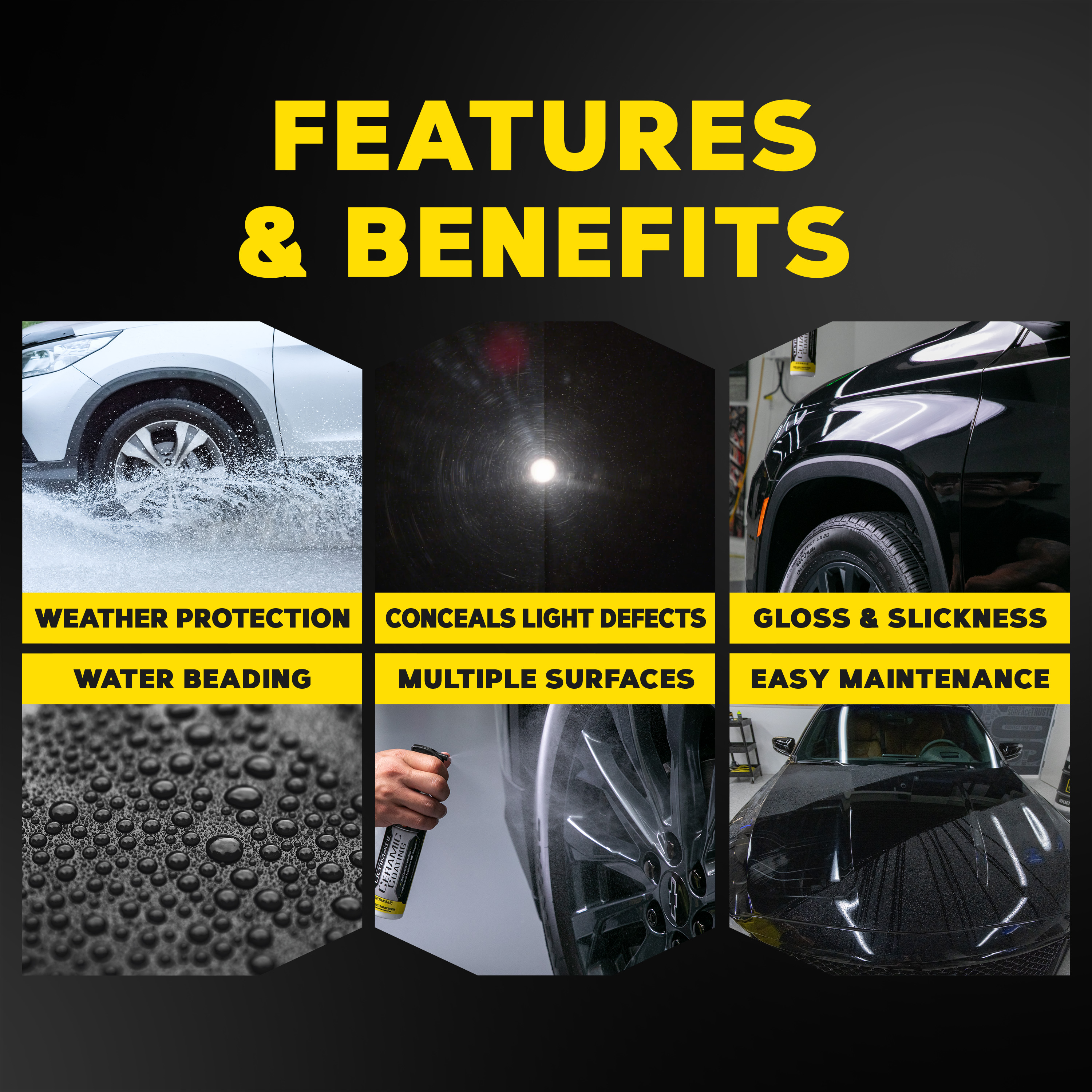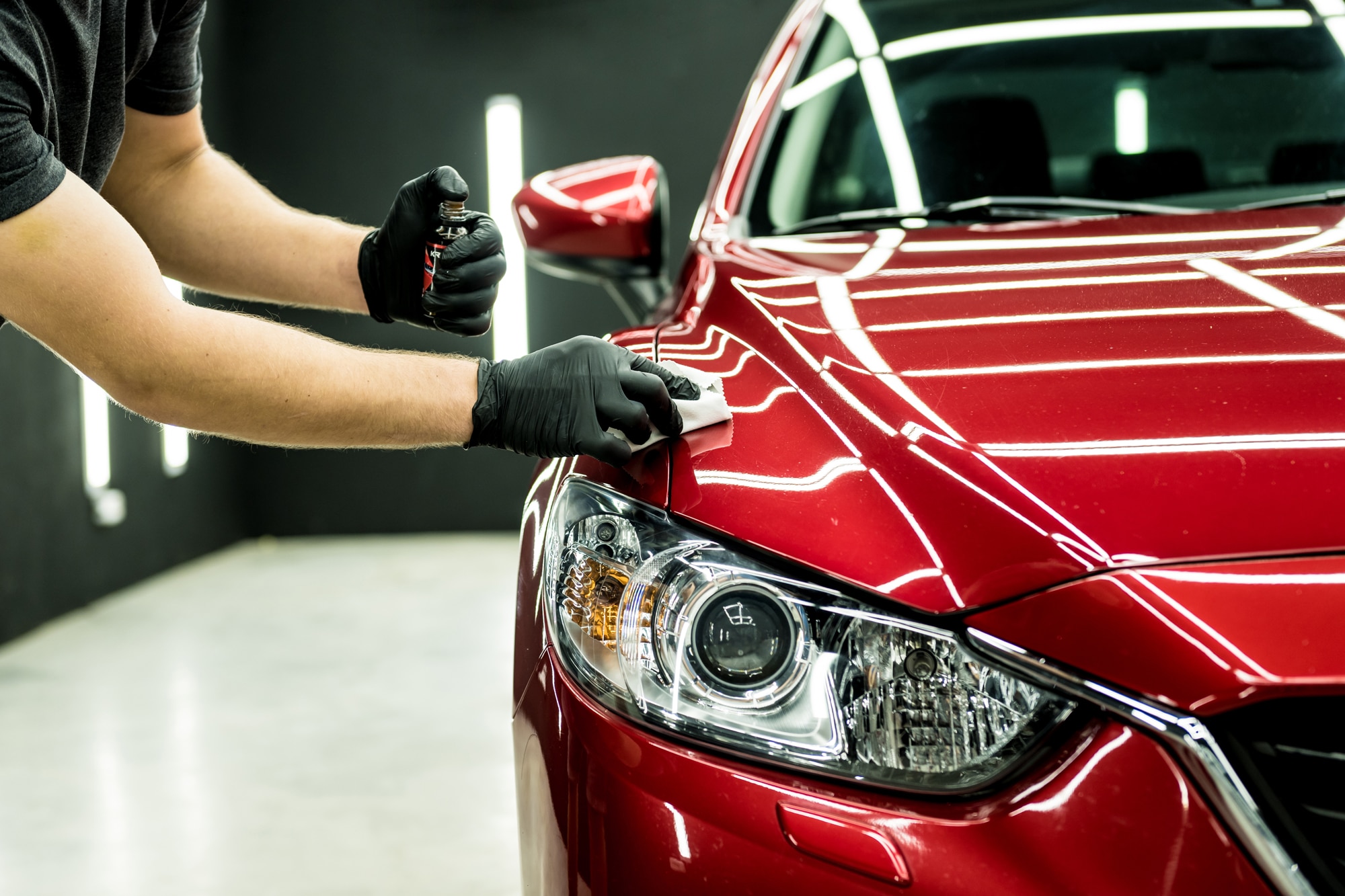Ceramic Finishing vs. Typical Wax: Which Provides Better Long-Term Security?
The dispute in between ceramic finishings and standard wax for automobile security has garnered significant focus among vehicle fanatics and specialists alike. While both offer the purpose of guarding paint, their distinctions in longevity, application, and long-term maintenance prices might affect a customer's selection. Ceramic coatings boast remarkable long life and resistance to ecological variables, yet the complexity of their application questions regarding availability and usefulness. As we check out these contrasting alternatives, it becomes necessary to consider not just the immediate advantages yet additionally the ramifications for vehicle care with time.
Overview of Ceramic Covering
Ceramic covering has obtained considerable popularity among automotive enthusiasts and detailers alike due to its innovative protective top qualities. This cutting-edge technology is created to create a sturdy, hydrophobic guard over an automobile's paint surface, significantly enhancing its resistance to ecological contaminants such as dirt, UV rays, and chemical spots. Unlike typical wax, which provides a momentary layer of protection, ceramic layers bond at a molecular degree with the paint, providing long-lasting sturdiness-- usually prolonging beyond 2 years with proper maintenance.
The application process entails thorough preparation of the vehicle's surface, consisting of cleaning and polishing to make sure optimal bond. Once used, the covering remedies to develop a robust layer that not just includes depth and gloss to the paint yet also streamlines upkeep. With its hydrophobic homes, ceramic layer allows water and dirt to slide off more quickly, minimizing the regularity of cleans and decreasing the risk of swirl marks.
Furthermore, ceramic finishes are offered in numerous solutions, permitting customers to pick items customized to their details needs and preferences. Generally, ceramic finish represents a substantial improvement in paint defense technology, supplying exceptional efficiency contrasted to traditional choices.
Introduction of Conventional Wax
Traditionally considered a staple in auto treatment, wax offers as a preferred selection for those looking for an uncomplicated method to boost and secure their car's paint - ceramic coating. Automotive wax typically consists of all-natural components, such as carnauba, or synthetic substances, developed to create a safety layer on the surface area of the paint. This layer not just boosts the lorry's gloss and beam but also provides an obstacle against environmental pollutants
The application of wax is usually user-friendly, making it available for both professionals and Do it yourself lovers. As soon as applied, wax calls for a curing duration, after which it hardens to develop a protective covering.
Nonetheless, while wax is efficient for enhancing the aesthetic allure of a vehicle, it is essential to keep in mind that the defense it provides may require more frequent reapplication compared to alternate items, such as ceramic finishes. Overall, conventional wax continues to be a favored alternative for those focusing on ease of usage and instant visual enhancement.
Resilience and Durability Contrast
While both ceramic coverings and traditional wax offer safety benefits for automobile paint, their longevity and longevity differ substantially. Traditional wax, generally made from natural carnauba or artificial polymers, usually provides a protective layer that lasts approximately three to six months. This fairly brief life expectancy demands regular reapplication to keep optimal security.
On the other hand, ceramic coverings are crafted from innovative nanotechnology, forming a covalent bond with the paint surface area. This causes a robust, hydrophobic layer that can sustain for two to five years, depending on the item and environmental problems. The exceptional resilience of ceramic finishings is attributed to their chemical framework, which supplies improved resistance to scratches, UV rays, and oxidation.

Protection Against Ecological Elements
Protecting a vehicle's paint from environmental aspects is important for maintaining its appearance and value with time. Cars are regularly subjected to a variety of components, including UV rays, bird droppings, tree sap, acid rainfall, and road crud, every one of which can jeopardize the integrity of the paintwork.
Ceramic coverings supply a durable protection against these environmental assailants. Unlike typical wax, which can deteriorate quickly under UV exposure, ceramic finishes form a long lasting, hydrophobic layer that resists the harmful effects of sunshine and ecological contaminants. This advanced innovation develops a chemical bond with the lorry's surface, providing exceptional security that lasts for several years, also in severe problems.
Traditional wax, while much easier to use, normally calls for constant reapplication and offers limited resistance to contaminants and UV rays. In time, it can discover this break down, leaving the paint at risk to scrapes and oxidation. On the other hand, ceramic coatings maintain their protective qualities longer, substantially minimizing the risk of paint damage and making sure that the automobile preserves its visual allure. Therefore, ceramic finishings are progressively identified as the remarkable selection for long-term security versus ecological elements.
Application and Maintenance Differences
The methods of application and subsequent upkeep for ceramic finishings and standard wax vary considerably, influencing the general customer experience and effectiveness of each item. Ceramic finishings call for a more complex application process, normally involving surface area prep work that includes cleaning, sanitizing, and polishing the automobile. Once the surface area is prepared, the ceramic coating is used in a controlled atmosphere, usually requiring professional proficiency to make sure correct healing and bonding to the paint.

While both items boost vehicle appearance, the longer-lasting protection offered by ceramic finishings may justify their first investment, regardless of the more demanding application process. On the other hand, conventional wax stays a prominent option for those seeking an easier, albeit short-term, service.

Conclusion
To conclude, ceramic finishes show substantial benefits over typical wax in regards to resilience and environmental management. With a life expectancy expanding 2 to 5 years and superior resistance to UV rays, dirt, and chemical stains, ceramic layers provide a much more reliable solution for long-term car upkeep. Although the application procedure might require expert proficiency, the resulting expense financial savings and decreased regularity of reapplication highlight the value of ceramic layers for those seeking optimal automobile defense.
The debate between ceramic coverings and typical wax for vehicle defense has actually gathered significant focus among automotive fanatics and experts alike. Unlike traditional wax, which supplies a temporary layer of defense, ceramic finishings bond find this at a molecular level with the paint, using resilient resilience-- usually expanding past two years with proper maintenance.
While both ceramic coverings and typical wax offer safety advantages for automobile paint, their longevity and durability vary significantly. For auto enthusiasts seeking lasting protection, ceramic finishings offer a compelling advantage over typical wax products.
In final thought, ceramic layers demonstrate considerable advantages over conventional wax in terms of resilience and ecological security.